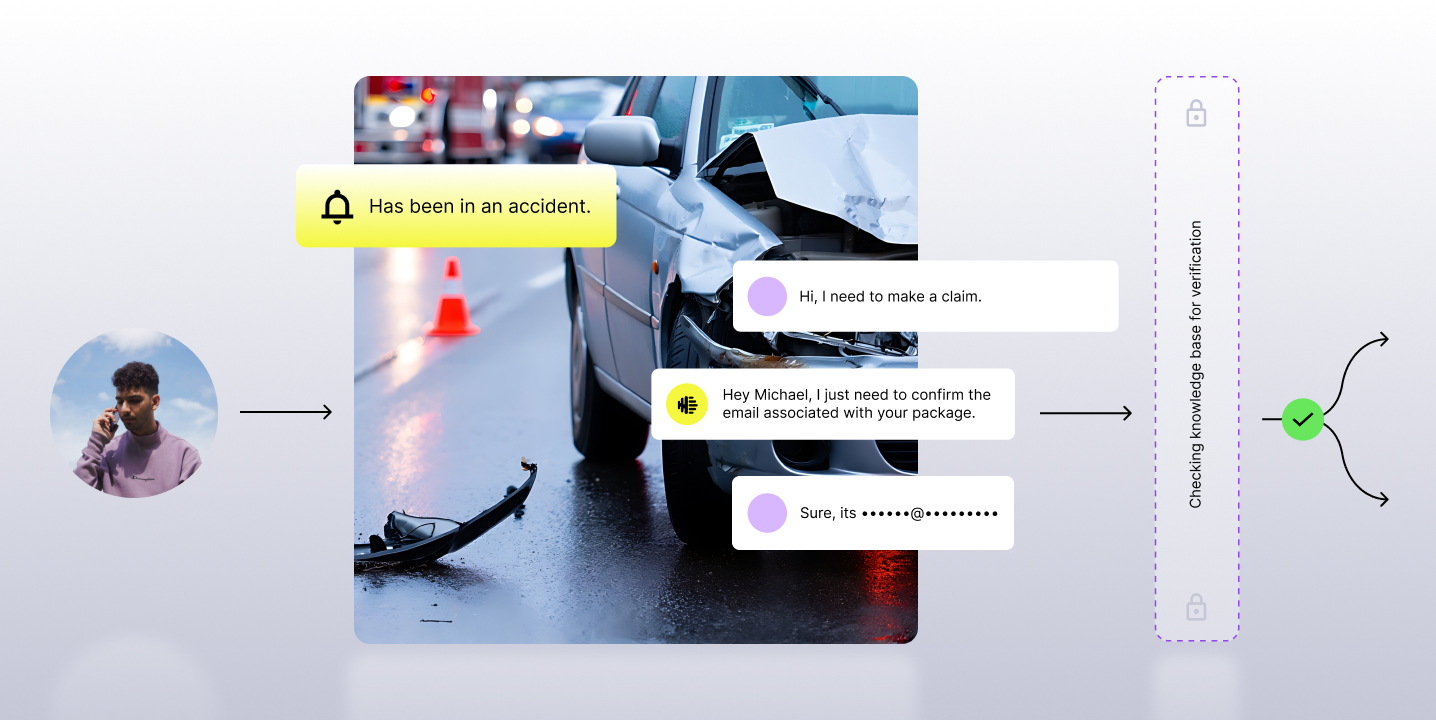This story is part of an ongoing series exploring how organizations are supporting remote work during the COVID-19 crisis. We hope these stories provide actionable tips and inspiration that organizations can use to make this transition a little bit smoother.
Now that you’ve got your support team at home handling all of their day-to-day tasks remotely, it’s time to help them thrive. For many contact centers, technologies like Voice AI, which brings the power of automation and speech analytics to quality management, are easing the burden of the transition.
In this blog post, we’ll discuss how businesses are validating the value and impact of this new technology that helps teams like yours stay connected, productive, and compliant from home while providing the best possible support experience.

What is Voice AI?
Simply put, Voice AI is a support agent enablement technology that combines the power of speech analytics, quality management, and machine learning. While these technologies have been around for quite some time, significant improvements in their accuracy and ability to now automate tedious processes with AI have helped them accelerate in the last year alone.
Now, teams can analyze trends, evaluate agents, and coach people in real-time with 87% or better speech-text transcription accuracy. Prior, accuracies ranged between 60-70% and these technologies took months to implement and calibrate.
Without Voice AI, many call centers are not able to scale monitoring across more than 1% of their calls. With low coverage, they're forced to juggle multiple tools or spreadsheets that don’t offer automation opportunities.

A critical component of Voice AI is its ability to surface and auto-suggest moments that support teams should monitor in-depth, including interactions that pick up on emotions or tones, such as sentiment, as well as keywords and phrases.
Moments can help you identify important interactions, such as compliance risks, process and script adherence, displays of empathy, time management improvements, product or service insights, and more across 100% of calls.

As you build a library of moments tailored to your business needs, you set the foundation for a future where you can augment agents on live calls with next-best actions, supervisor alerts, and insights that help agents drive smarter calls.
Particularly during this sudden transition to remote work, there are a number of ways to make the case for Voice AI.
Here are some of the top ones we’ve seen used at companies like National Debt Relief, Root Insurance, GoodRx, and Pearson successfully.
Complete More Evaluations in Half the Time
Quality checking and evaluating calls are two of the least scalable processes in voice support. Because of the manual approach and platforms quality teams use to simply access a fraction of calls, agent coaching suffers.
Today, with agents suddenly remote, it’s even easier for them to get disconnected from the scripts and processes they’re meant to use, and more difficult to raise a hand for assistance.
With Voice AI, quality analysts and supervisors can evaluate 10x more calls in half the time. This provides a much more accurate picture of an agent’s performance and leaves more time to provide in-depth coaching that drives behavior change. Some items, such as compliance adherence, can be automatically scored.
Benchmarks like Average Handle Time, Dead Air, Supervisor Escalations Hold Time, and more can also be measured much more accurately. To make the efficiency case for Voice AI, ask yourself these questions
- How many evaluations do we want to complete per QA in the future?
- What challenges are we seeing on calls that have negatively impacted CSAT?
- How does a measurable lift in evaluation scores impact other metrics?
- What’s the sunk cost of the lost time QAs and other teams, such as compliance or claims and disputes, spend on tasks like call transcription or call monitoring and scoring?
By visualizing the talk tracks used by top agents to run smarter calls and improve sentiment, Voice AI also fuels new training opportunities for the team.
Identify Thousands of Micro-coaching Opportunities to Improve the Customer Experience
With Voice AI, agents who only receive feedback on 2-4 calls a month prior cannot get much more in-depth coaching. On top of that, coaching is provided in micro-formats that agents can digest and understand within the context of their call by reading what was said and drilling down to the specific audio clip alongside it.

For one personal loan company, agents who once received very little feedback are now receiving 10x the feedback via comments each per month. At a national home goods retailer, Voice AI has helped improve soft skills, such as displays of empathy, by more than 37% on its customer satisfaction surveys.
Investing in agent coaching is key. According to another report from 2017:
- 78% say engaged agents are the most satisfied in their work.
- 89% of customers get frustrated because they need to repeat their issues to multiple representatives
- 42% of consumers want a live agent to help them with complex questions
To make the case for better coaching with Voice AI, ask yourself these questions:
- Is the coaching we provide our agents really driving behavior change?
- If not, where is it falling short?
- How do we measure the success of our current coaching and training programs?
- How much more coaching can our supervisors do with a platform like this?
- What is the business cost associated with helping agents work more productively and efficiently?
- What is the business cost associated with helping agents display empathy on more calls?
Drive 100% Compliance and Reduce Exposure to Risk
Compliance violation can have a massive impact on a call center, from monetary penalties to loss of brand trust and reputation.
Voice AI helps you eliminate compliance risks by automatically screening every call. At the same time, it can help keep honest agents honest by providing a way to proactively redact customer’s personal information and surface instances of potential fraud before they spiral out of control.

For one major BPO that supports a large energy company, they were able to uncover that agents were not being compliant on more than 35% of calls, particularly when making outbound calls. Voice AI helped them drive a 10+ percentage point improvement on key compliance metrics.
To make the risk and compliance case for Voice AI, ask yourself these questions:
- What is the cost of a compliance risk or lawsuit for my business?
- What is the cost of fraud for my business?
Get Trend Insights to Inform Business Operations and Hiring/Recruitment
Finally, Voice AI can bring valuable insights back to the business. These insights help operators identify trends that are driving up calls to reduce them. It can also ensure that everything from messaging, processes, brand standards, and more are adopted with consistency.
For EmployBridge, a national staffing firm, a single voice insight helped them uncover and mitigate a large operations inefficiency, and as a result, and place more than 1,800 additional candidates in jobs each week. That’s because the term “calendar full” was coming up on far too many calls, and they were able to take that insight back to management to solve the problem.
At the same time, some companies, including ERC BPO, use Voice AI to visualize how agents will perform during mock calls and to get more specific about the qualities they are looking for when they hire to bring down churn.
To make the insights case for Voice AI, ask yourself these questions:
- How much do we save our business when we reduce call surges and divert customers to other channels?
- What is the value of improving the hiring process, including reducing agent churn and increasing retention?
Ready to Learn More about Voice AI? Check Out These Free Resources:
- Guide: Reinventing Quality Management in the Call Center with Voice AI
- Playbook: Handling Call Surges Like a Pro
- Blog: From Reactive to Proactive: How QA and Compliance is Changing Across Call Centers
But don’t take it from us! Hear from one of our customers:
















